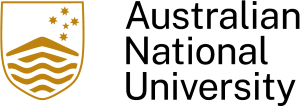
Our medical students do their own stunts
Movie magic brings an emergency simulation to life.
Deep in the wards of the South East Regional Hospital (SERH), beds have been taken over by what looks like a Hollywood movie set. ANU medical students are in hair and makeup, transforming into victims of a tragic mass casualty taking place on the hospital lawns in a few minutes. Moulage artist Jo Sommerville expertly applies bruises, broken ribs, and abrasions to our students-turned-actors, leaving a trail of clues that will tell a story to the doctors and help inform their diagnosis.
It feels more like a scene from the medical drama The Pitt than an educational setting.
“We want it to be as high fidelity as possible, which means people can actually immerse themselves in a simulation and feel like it’s the real thing.”
Jo Somerville | Moulage Artist

Fake blood and miscellaneous limbs lay strewn across a table, but the mood is jovial as the ‘actors’ pose for photos with their fresh ‘injuries’. But the atmosphere soon shifts when their ‘scenes’ and the reality of this emergency simulation gets underway.
The students have been tasked with recreating a worst-case scenario. Their role is to convince emergency services personnel that this is actually life and death.

Dr Nathan Oates from the ANU School of Medicine and Psychology is directing this blockbuster. But it’s not for theatrical release. It’s an elaborate training exercise bringing together fire, rescue, ambulance, SES, police, medical staff, and students at the South East Regional Hospital in Bega. While no lives are at risk, the pressure feels real in the moment.
“Simulations are a really great way of learning how to function well as a team and particularly how to function when you're in a context that's stressful.”
Dr Nathan Oates | Anaesthetist

Simulation is an important part of any medical training. It allows participants to practice in an environment where the stakes are low. Modern technology brings the experience as close to the real thing as possible.
In the SERH Simulation Centre, it looks and sounds like an episode of ER as Anishka, a third-year student at ANU, handles the patient going into cardiac arrest calmly and methodically.
“It still feels very high pressured. It’s still good practice for the real world, where it’s going to be a lot more intense.”
Anishka Fernandopulle | Medical Student

In no place is it more important to foster the next generation of junior medical doctors. Rural regions generally struggle to find enough doctors to look after their communities, so allowing students to experience everything life in the country has to offer is important.
“We are trying to join up education, training and workforce development in a single pathway to solve some of the issues we have with the maldistribution of rural health workforce in Australia.”
Professor Sally Hall Dykgraaf | Head of ANU Rural Clinical School
At the ANU Rural Clinical School in Bega students live, study and work embedded in the hospital and practice these simulations on a regular basis with the experts in the hospital. But today is different, this simulation is at a size and scale like no other in Australia.
The script is simple:
Day: Bega Main Street – An erratic driver crashes into a vehicle that then hits a local cafe.
Operator: Triple Zero – where are you calling from?
Caller: Uh… Bega. Uh, there's been a bad accident … It's bad. It's... it's in town on the main street…
This type of simulation is unique because it captures the entire trauma process. From the first responders on the ground to the doctors in the emergency department.
It has been designed to challenge the emergency agencies in scenarios in which they need to gain valuable experience. This year the focus was on burns, amputation and working in dangerous conditions.
“Even though it was acting, I was getting palpably nervous the longer I was in the car.”
Breanna Humber | Medical Student
The ANU medical students are literally stuck in the middle of the scene. Trapped under cars or unconscious in the sun. Their method acting allowed them to experience the emergency first-hand. A vital experience for understanding what their future patients have been through before being admitted to an emergency department.

“Seeing all the machines being used, the sound was actually the most eye-opening bit.”
Anishka Fernandopulle | Medical Student
It was a gruelling performance, but they got a lot out of it.
“You feel pretty hopeless and you feel pretty scared, and I think it’s pretty important to remember that when most people have contact with emergency services or healthcare, it’s a pretty scary time.”
Seamus King | Medical Student

Despite the controlled environment, you can feel the energy and urgency on the field. As the last patient was lifted into the ambulance, the onlookers breathed a sigh of relief that the scene was safe again.
But it’s all in a day's work for our medical student stunt doubles. A lesson they will not forget as they continue on to their future day jobs, where they will save lives for real.








